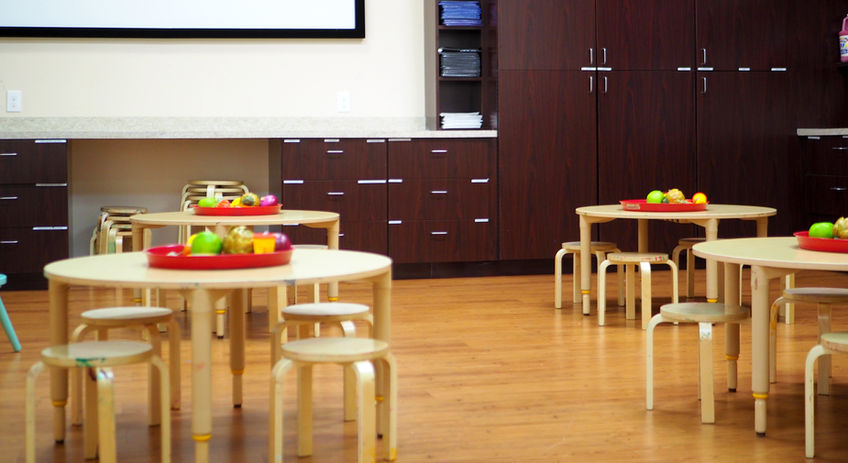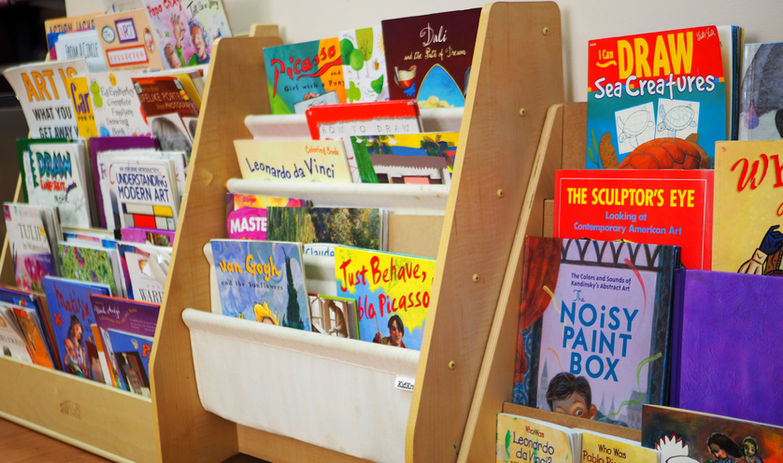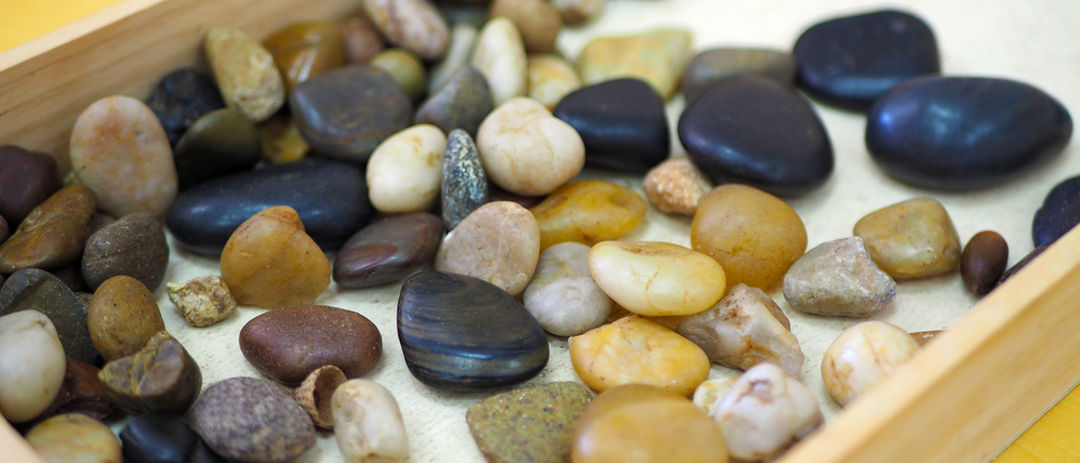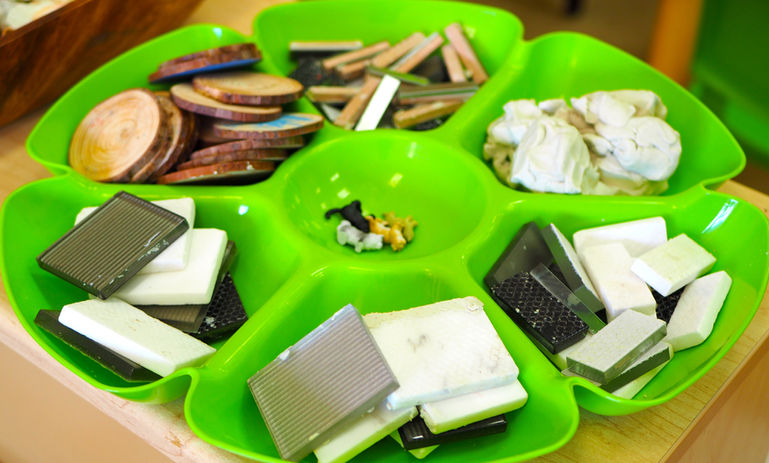
The Mays Environment
At MAYS we believe that a well-prepared environment is our students’ “third” teacher, after their parents and our staff. We strive to ensure that our environment is not only pleasing to be in, but thought provoking, interesting, and built with the success of the child in mind. When you walk in our classrooms, they are intended to feel warm and homelike. The teachers are interacting with students and helping them follow their interests, not dictating the classroom or controlling the children during self-directed learning time.
Aesthetics
We use natural and interesting real-world materials in our classrooms. It is common to see sticks, leaves, wool, fabric, wooden play items, and play silks in all age groups. We fill our classrooms with learning items that can be used for open-ended play and that invite the imagination and awaken the mind. We take great pride in providing well-crafted and pleasing play materials for our students.
We also enjoy adding “loose part” play in our classrooms—these items are typically collected over many years and are normally recycled from the world around us. For example, we may collect tops from water bottles to use as counters, in sorting activities, and to build with. The children may imagine these same tops as people, pets, currency, beautify stones to collect, or treasure to find. We do not use toys that are electronic or require batteries in our classrooms.
Discovery Areas
Our classrooms have several discovery areas that change each month based on the discovery topic and the students’ interests. Our discovery areas include science exploration, dramatic play, building and construction, art and creativity, and sensory play. The students are able to move freely from one area to another and stay in each area for extended periods of time, if desired.
Documentation
Documentation is critical in a Reggio Emilia Approach-based environment, and very visible in our classrooms. We document student learning by posting pictures on the classroom wall next to their projects and work, sending home daily tidbits of information through the Tadpoles system, and writing assessments of the children’s progress in all areas of development—social, emotional, physical, and cognitive.
Organization
Our classrooms are designed for students to be able to freely access their own belongings and the classroom equipment. We thoughtfully arrange books, materials, and toys in a way that allows students to instantly know where to access them, and we stock classrooms with plenty of each item to prevent conflict and competition. We strive for our classrooms to support the individual needs of the students in a thoughtful and stimulating environment.
Each child has their own cubby area for their belongings, as well as a safe place to store work that is still in progress. Some students work on projects for several days or even weeks before they declare it finished!
Group Time
Each classroom has a special area for group meetings and story time; we feel these areas encourage a valuable sense of community among children. This space in an area in which all of the children are able to sit and clearly see their friends and teachers.
Special Areas
We have over 20,000 square feet of outdoor space at our school. Children typically spend two to four hours outside each day—learning, reading, working on fine and gross motor skills, or simply playing with friends. We also have specialized sensory play areas with sensory tables set up for full-class explorations. Each week, our curriculum coordinator sets up new discoveries in our sensory tables using sand, water, rice, beans, cotton fluffs, paint, clay, oatmeal, flour, fresh flowers, fresh herbs from the garden, and even Jell-O and shaving cream!
The Mays School is also a certified Nature Explore classroom. The Nature Explore program is a national initiative that recognizes schools and other organizations that have made a commitment to providing outdoor classrooms and comprehensive programming to help children use the natural world as an integral part of learning. We see the Nature Explore program as an extension of our Reggio Emilia Approach principles.
Our school library is stocked with books and other reading materials for all ages, and is updated throughout the year with topical and seasonal selections.
Our indoor and outdoor art studios are also available for students to use each day. These are areas for open creation and the exploration of art materials. Each week the studios are filled with a variety of materials including paint, markers, crayons, chalk, pastels, watercolors, and graphite. Students are welcome to explore and utilize the materials to fully embrace their creative potential. Our students also have access to an indoor sensory gym where they can relax, regulate, and play.

























